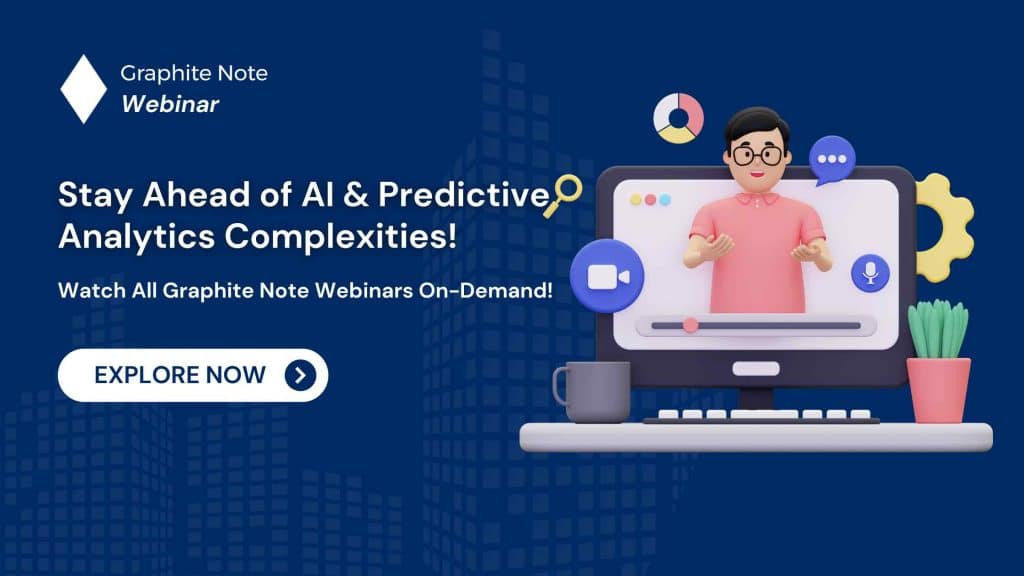Demand forecasting is an important part of running a successful business. When accurately predicting demand, you can optimize inventory levels, minimize production costs, and meet your customer demands. The development of artificial intelligence (AI) has reshaped the field of demand forecasting. Demand forecasting is now easier, more efficient and more accurate than ever before. In this article, we will explore the world of no-code AI solutions for demand forecasting, understanding their basics, exploring their role in business, and discovering how they enhance the overall forecasting process. Demand forecasts are critical for managing your business in an effective, profitable way.
Understanding No-code AI Solutions
No-code AI refers to the ability to implement powerful AI algorithms and models without the need for extensive coding knowledge or skills. You don’t have to be a programming wizard to leverage the benefits of AI in your business. You can create a demand forecasting model without needing extensive coding experience.
The Basics of No-code AI
Using no-code AI solutions, businesses can leverage pre-built AI models and algorithms to automate processes, make predictions, and gain valuable insights. These AI tools come with user-friendly interfaces, empowering users with little to no coding knowledge to solve complex problems using machine learning techniques.
No-code AI solutions have changed the way businesses approach AI implementation. In the past, companies had to rely on data scientists and programmers to develop and deploy AI models. This process was time-consuming and often required a significant investment in resources. With no-code AI solutions, you can now bypass these challenges and implement AI quickly and efficiently. You can easily use term demand forecasting and demand forecasting techniques thanks to tools like Graphite Note.
One of the key advantages of no-code AI is its accessibility. Eliminating the need for extensive coding knowledge, these solutions democratize AI, making it available to a wider audience. Business professionals, analysts, and entrepreneurs can use the power of AI without having to rely on technical experts. This accessibility opens up new opportunities for innovation and problem-solving across industries, enabling you to use demand forecasting methods to enhance your business operations.
The Role of No-code AI in Business
No-code AI solutions empower people to use AI to make accurate predictions, automate repetitive tasks, and streamline decision-making processes. Eliminating the need for coding, no-code tools make AI accessible to a wider audience, including business professionals, analysts, and entrepreneurs.
With no-code AI, you can enhance your demand forecasting capabilities using demand forecasting software. Using pre-built AI models, you can analyze historical data, market trends, and other relevant factors to predict future demand accurately and create accurate demand forecasts. This enables you to optimize their inventory management, reduce costs, and improve customer satisfaction.
No-code AI solutions enable you to automate repetitive tasks, freeing up valuable time and resources. For example, customer support teams can use AI-powered chatbots to handle common customer inquiries, enabling your human agents to focus on more complex issues. This automation improves efficiency and enhances the overall customer experience.
Another significant benefit of no-code AI is its ability to streamline decision-making processes. Analyzing large amounts of data and providing actionable insights, no-code AI solutions enable you to make quick, informed decisions. Whether it’s identifying market trends, optimizing marketing campaigns, or identifying potential risks, no-code AI empowers you to make data-driven decisions with confidence.
The Importance of Demand Forecasting
Demand forecasting involves estimating the future demand for products or services based on historical data, market trends, and other relevant factors. Accurate demand forecasts enable you to make informed decisions regarding production, inventory management, and resource allocation. Accurate demand forecasts are made easier with AI-powered tools. Active demand forecasting, term demand forecasting, and passive demand forecasting can be simplified using tools like Graphite Note.
Active demand forecasting looks at demand patterns and actual demand. Quantitative forecasting helps you understand the factors that affect seasonal demand. With good forecast accuracy, you can create an accurate sales forecast, and enhance your sales forecasting capabilities. Demand forecasting also helps you with supply chain planning, developing future sales strategies, and conducting market research. Demand forecasting can go beyond supply chain planning too, helping you strategize around uncertain economic conditions too. A time series analysis and machine learning tools can help you mitigate around external factors.
Demand forecasting plays a critical role in the success of businesses across various industries. When accurately predicting customer demand, you can anticipate market trends, identify potential risks, and capitalize on opportunities. This enables you to stay ahead of your competitors and maintain a competitive edge in the market.
One of the key aspects of demand forecasting is analyzing past sales data. By examining historical sales data, you can identify seasonal fluctuations, peak demand periods, and other trends that may affect future demand. This information is invaluable in developing effective marketing strategies, determining optimal pricing strategies, and planning promotional activities. Demand forecasting helps you with supply chain planning and supply chain operations, which is especially important for an ecommerce business. Optimized supply chain operations and effective supply chain planning help you grow your market share, while managing the multiple factors that affect your business.
What is Demand Forecasting?
Demand forecasting involves analyzing past sales data, market trends, economic indicators, and other relevant information to predict future customer demand accurately. Giving you a clear understanding of expected demand, demand forecasting helps you optimize operations, reduce costs, and maximize profitability.
Demand forecasting is not limited to just estimating the demand for existing products or services. It also plays an important role in new product development and launch. As it accurately forecasts demand for new products, you can allocate resources effectively, plan production schedules, and ensure a successful market entry.
Demand forecasting is not a one-time activity. It is an ongoing process that requires continuous monitoring and adjustment. As market conditions change, you need to adapt your demand forecasting models to reflect the evolving dynamics. This flexibility helps you to stay agile and responsive to changing customer preferences and market trends.
Benefits of Accurate Demand Forecasting
Accurate demand forecasting offers numerous benefits. Accurately predicting demand, you can avoid overstocking or understocking products, ensuring that you can meet customer demands while minimizing inventory costs. Demand forecasting helps you plan your production schedules efficiently, allocate resources effectively, and improve customer satisfaction levels.
Accurate demand forecasting enables you to optimize your supply chain management. Giving you a clear understanding of expected demand, you can establish strategic partnerships with suppliers, negotiate favorable contracts, and ensure a steady supply of raw materials or finished goods. This reduces the risk of supply chain disruptions and enhances overall operational efficiency.
Another significant benefit of accurate demand forecasting is improved financial planning. When accurately estimating future demand, you can develop realistic sales targets, budget effectively, and allocate resources efficiently. This empowers your business to optimize financial performance, reduce unnecessary expenses, and improve profitability.





